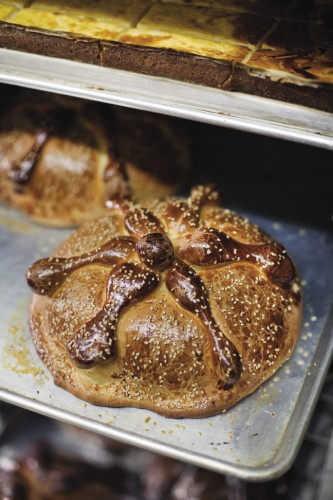New Yorkers are used to out-of-towners coming to crash on their rickety pull-outs and unfurled futons. But each November, families across Sunset Park’s Mexican community welcome a unique category of visitors: the souls of the dead.
Known as El Dia de los Muertos, or the Day of the Dead, this vibrant convergence of pre-Hispanic and Roman Catholic traditions runs for 48 hours: All Souls’ Day (November 1), when deceased children are remembered, and All Saints’ Day (November 2), when adult souls are honored. Ofrendas, or offerings, are laid out: photographs and mementos belonging to the deceased, plus flowers, incense, votives and religious images. Mindful that the spirits have come a long way, the living set out fresh towels, a basin of water, perhaps even a bottle of tequila to refresh them after the journey.
In Mexico, it’s a lively celebration. During all-night vigils, families assemble in cemeteries to adorn graves in colorful garlands and share meals of the deceased’s favorite foods, to better remember them—an array of Proustian madeleines taking the form of aromatic moles, tamales and tortillas, dishes of rice and beans and desserts like candied pumpkin and fruit-flavored atoles. Calaveras (skulls) shaped from sugar, chocolate or amaranth seeds are exchanged, darkly humorous tokens with a sweet finish. For some, la ofrenda is symbolic while others believe the souls really do take part. In either case, a respectful amount of time is given for the dead to eat before the living help themselves.
Typically sold in golden-brown rounds, they’re decorated with dough “bones” and fill Sunset Park bakeries each fall. Starting in October as the holiday approaches, Javier Torres, owner of La Flor Bakery, sells dozens of pan de muertos every day.
The acclaimed Mexican-born baker Fany Gerson visits Sunset Park shops for hard-to-find ingredients for the pan de muerto she makes in her Red Hook kitchen to sell at the New Amsterdam market and through her online store, La Newyorkina. This year she plans to add sugar skulls but admits there’s something special about the pan de muerto: “This bread was created to celebrate people’s lives,” she says, “and to laugh at death.”



